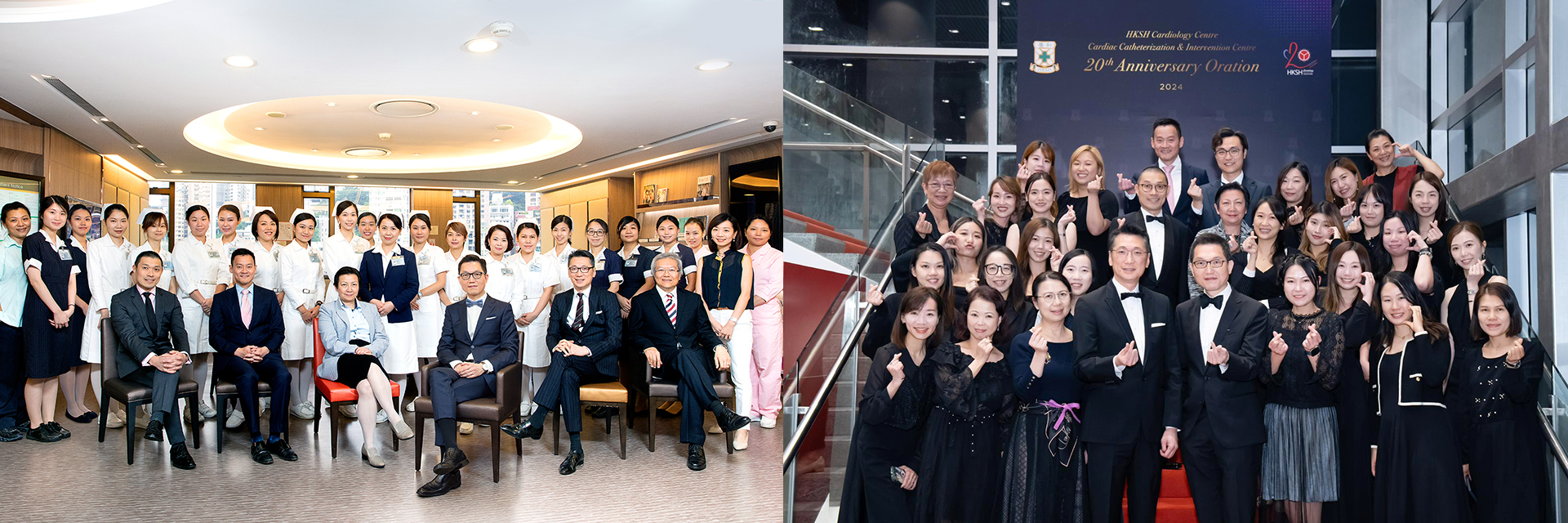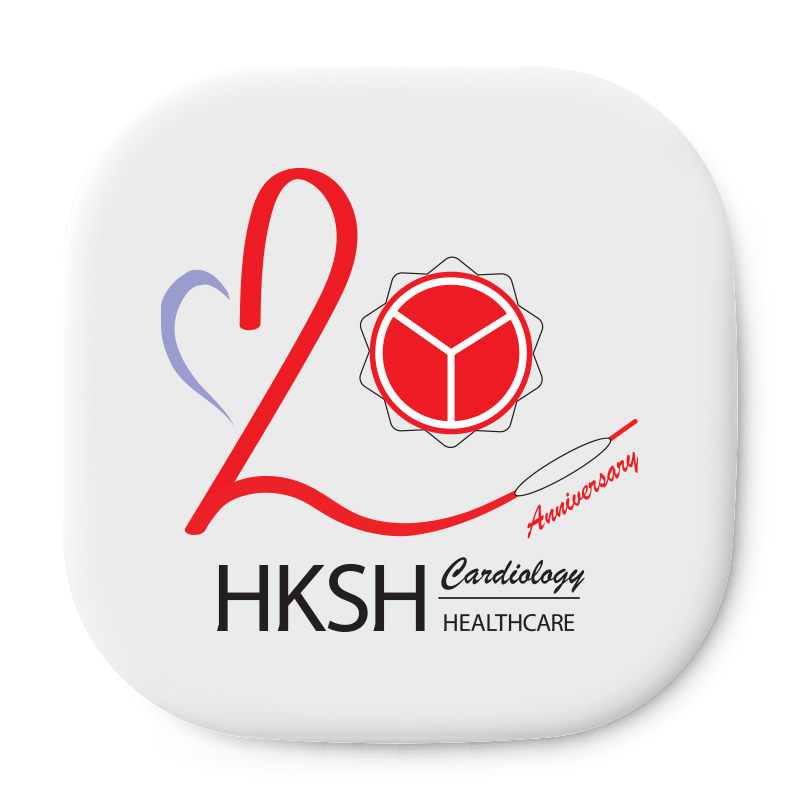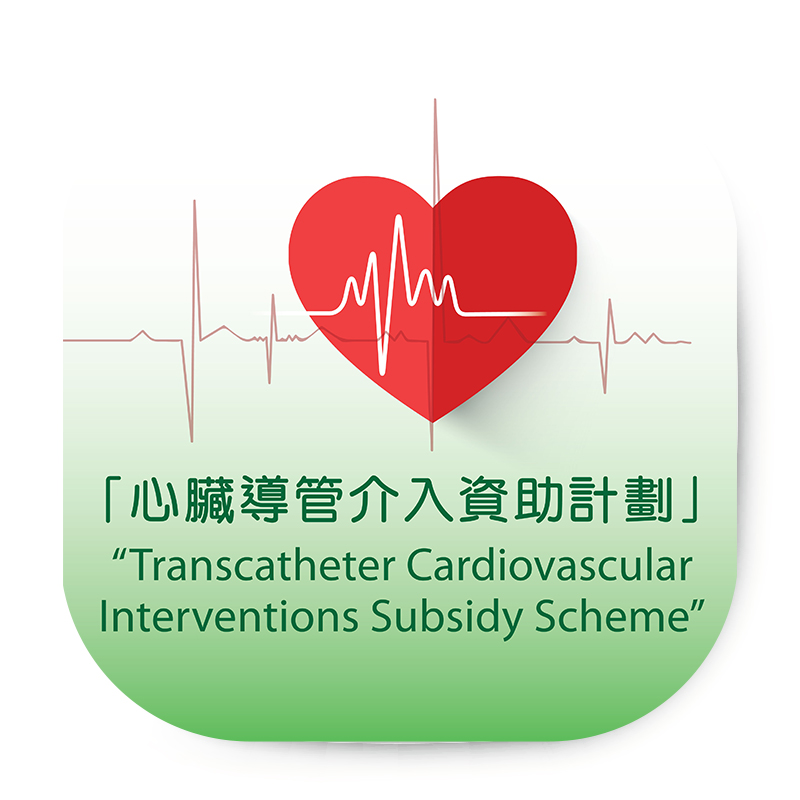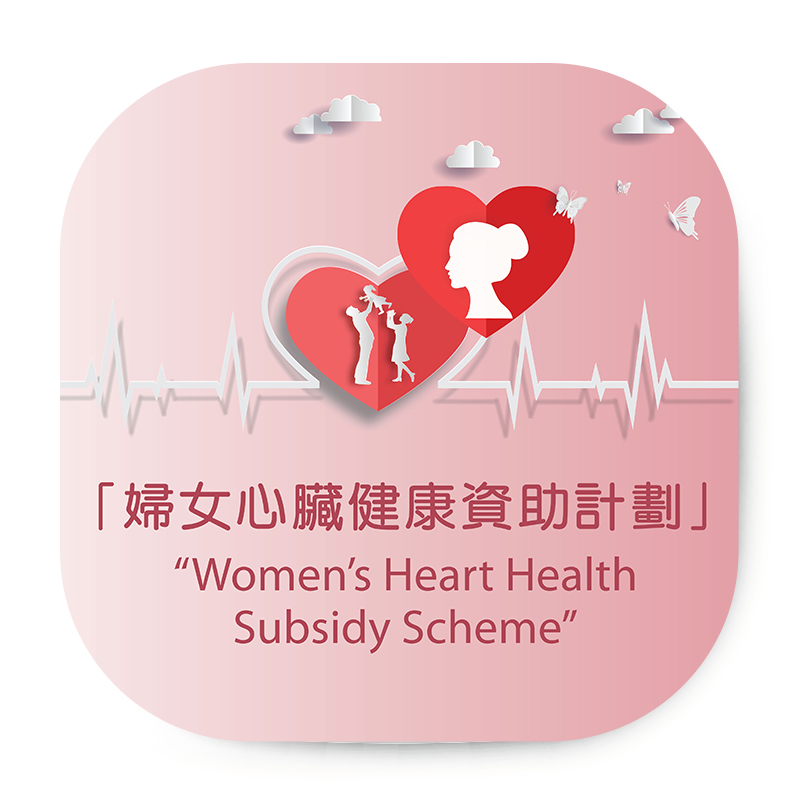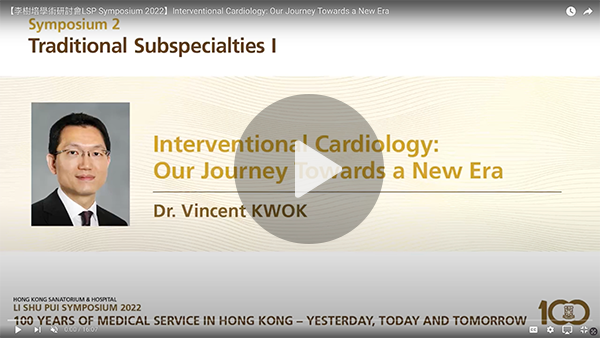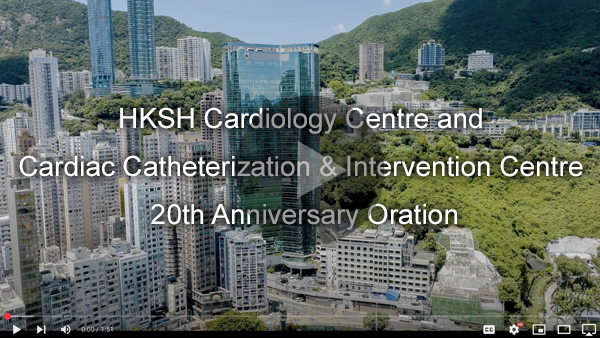Cardiology Centre
The Cardiology Centre specialises in non-invasive diagnosis and management of cardiovascular diseases. In addition to outpatient consultation, we provide a Global Cardiovascular Risk Assessment Programme, which is a disease prevention programme with health education and professional advice for patients identified with cardiovascular risk factors.
 
Global Cardiovascular Risk Assessment Programme
Understanding Cardiovascular Diseases
Cardiovascular disease is the leading cause of death and a major public health issue in Hong Kong and worldwide. Notably, coronary artery disease is the most prevalent among all cardiovascular diseases. In recent years, patients suffering from coronary artery disease are getting younger. As this disease sometimes strikes without noticeable warning signs, it is also known as the "silent killer".
Coronary artery disease is the result of fatty deposits (plaque) building up on the wall of the coronary artery which supplies oxygen and nutrients to the heart muscle. A narrowing or blockage in the coronary artery cuts off the vital supply to the heart muscle, resulting in ischemic heart disease. Plaque deposition can also lead to conditions such as hardening of arteries (atherosclerosis), chest pain or stroke.
Risk Assessment and Disease Prevention
Hypertension, diabetes, high concentration of low- density lipoprotein ("bad" cholesterol) and low concentration of high-density lipoprotein ("good" cholesterol) in blood and smoking are some of the modifiable risk factors of cardiovascular diseases. By a comprehensive evaluation of risk factors and non- invasive examinations, our Global Cardiovascular Risk Assessment Programme can help evaluate a patient's risk of developing cardiovascular diseases and formulate an appropriate action plan for those at intermediate and high risk.
Non-Invasive Diagnostic Examinations
The following non-invasive diagnostic examinations are performed at our Centre:
- Resting Electrocardiogram (ECG)
ECG is a graphic representation of electrical activity occurring in the heart, as detected by electrodes placed on the surface of the body. ECG can provide preliminary evidence of abnormalities such as myocardial infarction, hypertrophy (heart muscle enlargement) or arrhythmia (abnormal heart rhythm), or other conditions such as electrolyte imbalance or drug-induced effects. Therefore, ECG is an indispensable basic method of assessment in suspected cardiac disorders and cardiac rhythm disturbances. It is also used as a baseline screening test or pre-operative assessment . - Holter Monitoring
A Holter monitor is a portable electrocardiogram (ECG) that monitors the heart rate of ambulatory patients around the clock. Patients are sent home with the monitor and can carry out their daily activities as usual during the monitoring period. It is most often used for:- assessment of the severity of abnormal heart rhythm
- evaluation of patients with syncope (fainting), palpitations (fast and irregular heartbeats) or other symptoms that may be due to heart rhythm disturbance
- evaluation of the efficacy of anti-arrhythmic treatment (pacemaker implantation, radiofrequency ablation or drug treatment)
- Echocardiogram
Echocardiogram, by means of high-frequency sound waves, allows real-time detection of the heart structures and haemodynamic function. It can also provide information on heart contraction activities during rest and stress. Advanced Tissue Doppler Imaging technology allows the physician to accurately assess whether the heart muscle is working in synchrony and to choose the most suitable treatment regimen accordingly.

- Exercise Treadmill Electrocardiogram Test
Exercise Treadmill Electrocardiogram Test is a useful non-invasive examination of the cardiovascular response to exercise. This multi-stage test can provide information about your exercise capacity, heart rhythm and the status of oxygen supply to the heart muscles during stress.
 - Advanced Imaging Examinations
Aside from tests outlined above, advanced technologies such as CT Angiography, Cardiac MRI, Myocardial Perfusion Scintigraphy Imaging and PET Scan are also commonly used in the diagnosis of cardiovascular disease. For patients who need to undergo these tests, expedited arrangements will be made with relevant departments of the Hospital.
Patients who need to undergo interventional procedures will be referred to the Cardiac Catheterization & Intervention Centre (CCIC).
 
Cardiac Catheterization & Intervention Centre (CCIC)
 
Located on 15/F, Li Shu Pui Block, the Cardiac Catheterization & Intervention Centre (CCIC) supports a wide range of invasive cardiac investigations to facilitate cardiovascular disease assessment. With state-of-the-art equipment including Digital Angiography System, Intravascular Ultrasound System and the latest 3D Optical Coherence Tomography, doctors can now provide more accurate diagnoses and better treatments to patients.
CCIC also supports Percutaneous Transluminal Balloon Angioplasty and Stent Implantation, Pacemaker Implantation, Electrophysiology Study (EPS) and Radiofrequency Ablation (RFA) for arrhythmia management, intervention for congenital heart diseases (e.g. Atrial Septal Defect (ASD) closure device for ASD treatment), MitraClip for Mitral Regurgitation and Left Atrial Appendage Occlusion. Introduced in 2004, minimally invasive trans-radial interventions have become the standard approach in around 90% of our percutaneous coronary intervention cases.
3D Optical Coherence Tomography (OCT)
Our Centre introduced the latest HD Intra-coronary 3D Optical Coherence Tomography (3D-OCT) system in September 2016. Using light interferometry and near-infrared light for imaging purposes, 3D-OCT can obtain optical signals from optical scattering media, such as biological tissues. The three-dimensional images thus acquired can attain a micrometer resolution. OCT enhances our capability to assess the vessel-clogging plaques and coronary tissues. The “optimised stent software” of the system ensures better outcomes for metal/bioresorbable stent implantation by accurately assessing the degree of stent apposition as well as the condition of side branch after stent implantation.

Videos >
This image shows the interior of the blood vessels after 3D OCT-assisted implantation of stent.
Each year our team handles over 1,000 cases of cardiac invasive treatments, including emergency procedures. Every minute counts during acute heart attack. CCIC provides 24-hour emergency services to patients in need.
Myocardial Infarction – When Treatment Time is Muscle
A Record of 47-min “D2B” Time
Time is the key to treating Acute Myocardial Infarction (AMI). Door-to-balloon (D2B) time refers to the time frame when the patient reaches the hospital (door) to the moment when the clogged artery is pop open by a balloon catheter (balloon). According to international guidelines, D2B should be less than 90 minutes. All procedures starting from check-ups, diagnosis to Balloon Angioplasty are expected to be completed within 90 minutes, immediately after the diagnosis of heart attack is made at the Outpatient Department (OPD) with a view to achieving a higher survival rate and a lower risk of complication.
In 2011, CCIC and OPD achieved a new record of completing the whole Primary Angioplasty procedure within 47 minutes. This is an excellent example of teamwork and cooperation among different departments.
Interventional Procedures
CCIC supports the following invasive procedures: - Coronary Angiography
It allows doctors to examine the general condition of heart's atherosclerotic and, most importantly, to ascertain if coronary arteries are blocked by atherosclerotic plaque.
Under local anaesthesia, a catheter is advanced into the coronary arteries through a small puncture, either in the wrist (trans-radial) or groin (trans-femoral). Upon contrast injection, the coronary arteries will come into view under X-ray, allowing the physician to assess if there is any blockage. Nowadays, Balloon Angioplasty is usually performed to open the blockage in the same sitting. .
 - Balloon Angioplasty and Stenting
As a minimally invasive procedure, Balloon Angioplasty is performed under local anaesthesia to unblock coronary arteries.
Through a small opening in the wrist or groin, a catheter with a small inflatable balloon at the end will be positioned within the narrowed segment of a coronary artery. Under X-ray guidance, the balloon is inflated to press the fatty deposits against the wall of the blood vessel. It increases the diameter of the vessel and thus restore normal blood flow.
A trans-radial catheter is usually used in Balloon Angioplasty if deemed suitable by our Cardiologists after stringent assessment. This approach facilitates early mobilisation of patients and discharge.
To reduce the risk of post-procedural re-narrowing of coronary arteries over time, your doctor may recommend the implantation of stents, which are small mesh metal tubes, into your blood vessel via a balloon catheter. Once the balloon has been deflated and withdrawn, the stent will stay in your coronary artery permanently so as to keep the blood vessel patent. The new drug-eluting stent systems can reduce the incidence of re-blockage down to 4 to 8%. Drug eluting stent (DES) has been used in over 95% of our cases.
During the procedure, advanced adjunctive devices such as intracoronary ultrasound, fractional flow reserve (FFR)(to evaluate bloodflow in the arteries), high speed rotational atherectomy (for calcified blood vessels), directional coronary atherectomy, filter wire (distal protection device) and thrombectomy (removing clots) are sometimes employed to facilitate precise diagnosis and treatment, thereby maximising success rate and minimising the rate of complications.
In general, the complication rate of contemporary interventional procedures is around 1-2%. The risk of death is below 0.5%.
   - Implantation of Permanent Pacemaker / Implantable Cardioverter Defibrillator (ICD)
These devices monitor the heart’s electrical activities and send out electrical impulses when necessary. A pacemaker serves a basic function of maintaining stable and regular heartbeat. Meanwhile, an Implantable Cardioverter Defibrillator (ICD) helps protect the patients from life-threatening ventricular arrhythmia.

Cardiac Re-synchronisation Therapy (CRT) makes use of a bi-ventricular pacemaker to synchronise the heart rhythm, which may help alleviate symptoms of heart failure.
The pacing leads of a pacemaker or ICD are inserted into the heart chambers through a vein in the upper chest region, usually under local anesthesia.
In October 2015, our cardiologist has started using the ground-breaking “Leadless Pacemaker”. Unlike the traditional models (which are inserted under the skin and connected to the heart with wires to sustain heart contraction in patients with slow rhythm), this drug capsule-sized pacemaker is directly implanted into the right ventricle.
Advantages:
• 93% smaller than the traditional models in size
• No bump
• No scar left in the chest
• No need for wires or conducting wires
Indication
• Only for patients in need of a single chamber pacemaker
 - Electrophysiology Study (EPS) and Radiofrequency Ablation (RFA)
Electrophysiology Study (EPS) and Radiofrequency Ablation (RFA) are used for the diagnosis and management of heart rhythm disorders respectively.
EPS is an electrical "test drive" to determine if an individual's heart has the tendency to go into abnormal rhythm that requires treatment. By advancing catheters into the heart chambers through a small opening in the groin, the physician can study the electrical signals in order to:
- find out if there is abnormal heart rhythm when the patient complains of episodes of fainting or palpitation
- assess the potential risk of patients with abnormal heart rhythm
- test the effectiveness of medications in controlling the abnormal heart rhythm
RFA is a percutaneous interventional therapy used to cure abnormal rhythm. During the procedure, the tip of a specially designed catheter heats up and delivers high frequency energy to the precise area of the heart that is causing the abnormal heartbeat, thus ablating the pathway or tissue causing the chaotic rhythm.

State-of-the-Art Equipment
Our quality services are supported by a full range of advanced equipment:
- Biplane All-Digital Angiography System
With cutting-edge dual detector technology, it produces exquisite images of the cardiovascular system and provides cardiologists with high-fidelity images of the coronary artery narrowing or blockage. This significantly improves the outcomes of angioplasty and stenting procedures even for complex lesions.
 - I-Lab Intravascular Ultrasound System
Intravascular Ultrasound is a new gold standard in examining the inside of blood vessels. This latest technology helps characterise the form and structure of the plaque and optimise coronary stent implantation.
  - Fraction Flow Reserve
It measures arterial blood flow to illustrate the severity of the narrowing of arteries. - 64-Channel Electrophysiology System
This new system enables seamless intra-cardiac signal analysis for the most advanced Electrophysiology Study and Radiofrequency Ablation procedures.
Keeping Abreast of the Latest Developments at International Conferences
Our CCIC team has been actively involved in international conferences and activities to keep abreast of latest developments and trends in CCIC, in hopes of bringing the best practice in interventions thus clinical outcome to patients.
Our cardiologists have been invited to speak and perform live demo surgical procedures at international conferences and forums for exchanging views on treatment plans and clinical findings. Conferences attended by our CCIC team include Transcatheter Cardiovascular Therapeutics (TCT), Transcatheter Cardiovascular Therapeutics Asia Pacific (TCTAP), China Interventional Therapeutics (CIT), and Euro PCR.
  
  

HKSH and LKSF “Transcatheter Cardiovascular Interventions Subsidy Scheme”
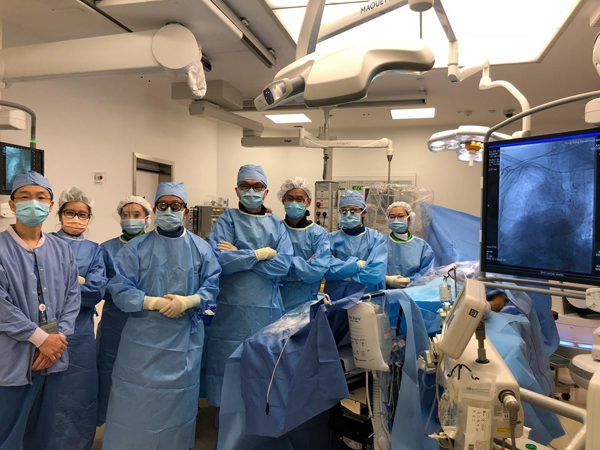 
Application is still open for the remaining balance of around HK$8 million under the “Transcatheter Cardiovascular Interventions Subsidy Scheme” which was jointly launched by Hong Kong Sanatorium & Hospital Cardiology Centre and Li Ka Shing Foundation with the total amount of HK$15 million in 2018-19. The Scheme provides financial assistance to patients in need of four major sophisticated procedures related to heart diseases (The procedure names are stated in the bracket). - Blocked coronary arteries (Coronary stenting procedure)
- Severe aortic stenosis (Transcatheter Aortic Valve Implantation (TAVI))
- Leaky mitral or tricuspid valve (Transcatheter Mitral/Tricuspid Valve repair (Clip))
- Non-valvular atrial fibrillation (Left Atrial Appendage Occlusion (LAAO))
Cases to be put under the Scheme will be vetted by Cardiology Centre experts based on patients’ health condition, financial condition and the anticipated improvements in quality of life after operations. Referrals from other cardiologists will also be considered.
LKSF will cover the cost of the procedure including the surgical implants, while under the Scheme the Hospital and attending doctors will provide concessionary rates in hospital and consultation charges.
For enquiry, please email to LKSFSS-enquiry@hksh.com
Reference Price of 4 Types of Operation Procedures (with subsidies from Li Ka Shing Foundation)
Types of Operation Procedure | Patient Paid Amount *
(Average) | Patient Paid Amount
(Range) | Coronary Stenting Procedure
| HK$66,000 | HK$48,000 - HK$107,000 | Transcatheter Aortic Valve Implantation (TAVI) | HK$260,000 | HK$158,000-HK$390,000 | Transcatheter Mitral/Tricuspid Valve Repair (Clip) | HK$150,000 | HK$100,000-HK$190,000 | Left Atrial Appendage Occlusion (LAAO) | HK$74,000 | HK$74,000 |
* The patient paid amount includes the fees of hospital, operation theatre, blood test, surgical equipment and materials as well as the coronary artery stents, valves and etc. The above price is subject to the patient's condition and is for reference only. 14 December 2021 The Chau Hoi Shuen Foundation and the Hong Kong Sanatorium & Hospital (HKSH) jointly launched “Women’s Heart Health Subsidy Scheme” The Chau Hoi Shuen Foundation (the Foundation), in collaboration with the HKSH Cardiology Centre (HKSH CC), have jointly launched the “Women’s Heart Health Subsidy Scheme” (the Scheme) with a donation of HK$5 million from the Foundation in 2023. The funding will be used to subsidise female patients to undergo cardiac examinations and, if necessary, coronary stenting procedures. Women in need can apply for the subsidy through a doctor’s referral. The applications will be assessed and approved by the medical team of the HKSH CC based on the patient’s condition, financial status, and anticipated improvement in quality of life after the operation. In support of the Scheme, eligible patients are offered concessionary rates for hospital charges and consultation fees from the Hong Kong Sanatorium & Hospital and by participating doctors. The Foundation provides subsidies for two pre-operative consultations, one post-operative consultation, and specific examinations prior to the operation, while patients are responsible for covering the charges of the oral medications prescribed at HKSH CC. For coronary stenting procedures, patients are required to pay HK$40,000. In addition to that, they will need to cover the fees for meals and prescribed oral medication during hospitalisation. The Foundation will subsidise the rest of the hospitalisation expenses. For enquiries, please contact us via email: CHHFSS-Enquiry@hksh.com |
